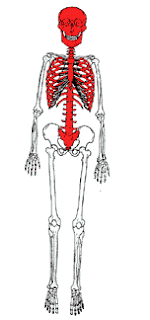
The title of the film is portrayed in a very simple, easy to read fashion, but, this turns out to be extremely effective and meaningful. The sheer simplicity means that nothing is revealed tot he audience leaving them with the fear of the unknown. And, it is meaningful as just before the title comes up we see the hand/arm of a dead body suggesting that the title and that dead bosy are linked, creating questions to what is the meaning of the title and the connection the corpse and the title share. The white writing against a black backdrop, spaced apart gives a very chillinh portrayal as white against black isnt seen as a positive tone, but a negative tone, making the audience feel on edge and unsettled.
Setting/Location:
The setting is revealed as a location near a high school, but the first setting we see by a sewer is portayed as dark, dingy and depressing, which in this shot clashes against everything around it as the sun is shining, its broad daylight and seems like an urban environment. This confuses the audience because it makes them think how can a murder take place in a highly populated area without being noticed by anyone but this one person. The dark shadows present a cold feeling and as a result the audience feel a state of shock.
Costumes/Props:
All the people you see are wearing modern clothes but I think that the things that are more important are small unoticable things like accessories because they could be the key to indetifying who is who throughout the film. Also, there was a piece of paper providing the character with a location that he assumed was a meeting point, this prop is vital to linking the boy into the next setting and gives subtle clues as to whats going to happen next, yet, at the same time it makes the audience think deeply about what could happen as they have been kept in the dark so far. Also, the dead body has vibrant clothes on showing that the dead body of the woman was young and vibrant which is ironic because shes now dead in a dingy sewer.
Editing/Camera Work:
An effective shot used is when the boy is at the phone booth talking on the phone when suddenly he begins to looks around, this is achieved by a handheld camera movement in order for it to see natural and to suggest to the audience that he doesnt want to be there. Also at the beginning we see a close up of shoes which fill the whole frame limiting what the audience can see, instantly making them want to see more, drawing them in and making them inquisiive to find out who that person is and why they are there. Another effective shot is the close up of the dead womans leg which seems to be muddy or dirty, which makes the audience ask why, as she isnt dressed for those kind of activities (she is dressed formally), suggesting she expect to end up the way she did or doing what she did to end up dead. This makes the audience even more suspicious as to whats going on and this sense of suspicion is increased by them not being able to see what the dead womans face looks like keeping her mysterious. We then see a extreme close up of a cigarette that was dropped by another un seen character, with the boy infront of it we see an arrow pointing to the boy, suggesting that there is a link between the cigarette and boy giving the audience a clue in to whats going to happen next but not revealing anything else, building the suspense and tension.
How The Opening Sequence Sets Up The Story:
The opening sequence sets up the story by providing the audience with very subtle clues about whats going to happen but not revealing any solid evidence that leads straight to the answers the audience are looking for making them want to watch more, keeping them on edge and engrossed in the film. It also sets up the story to be very calculated because all the clues that have been given so far have been physcological meaning that mental games are being played rather than just brutal attacks as were used to seeing.
Genre:
The genre is thriller and the opening sequence suggests this by keeping the audience in the dark, tense music, mysterious characters and a murder or death, all this keeps the audience constantly thinking and complys with the stereotypical conventions of a thriller, therefor making it a successful film.




